The Blennerhassett Mansion
Introduction
Author-Uploaded Audio
Listen to a narration of this entry's description by Eliza Kolander.
Text-to-speech Audio
Images
Vintage Postcard Picture of House

Photograph of the current mansion.

The inside of the current mansion.
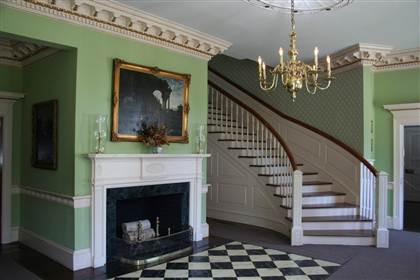
Margaret Agnew Blennerhassett
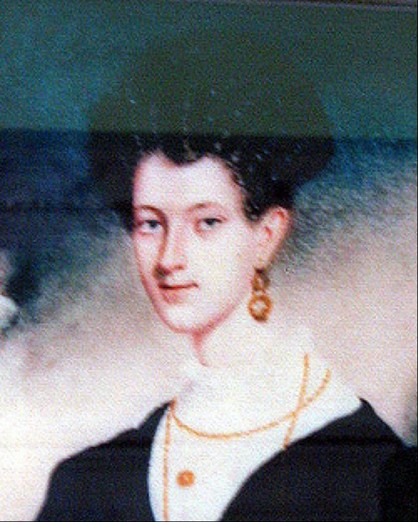
Detail of the ceiling in the upstairs entertainment area of the reconstructed mansion.
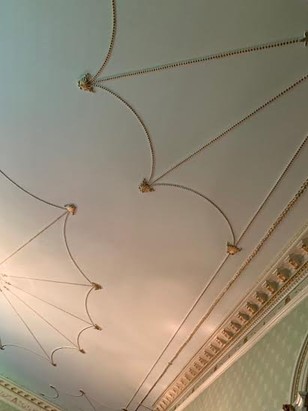
The master bedroom of the reconstructed mansion.
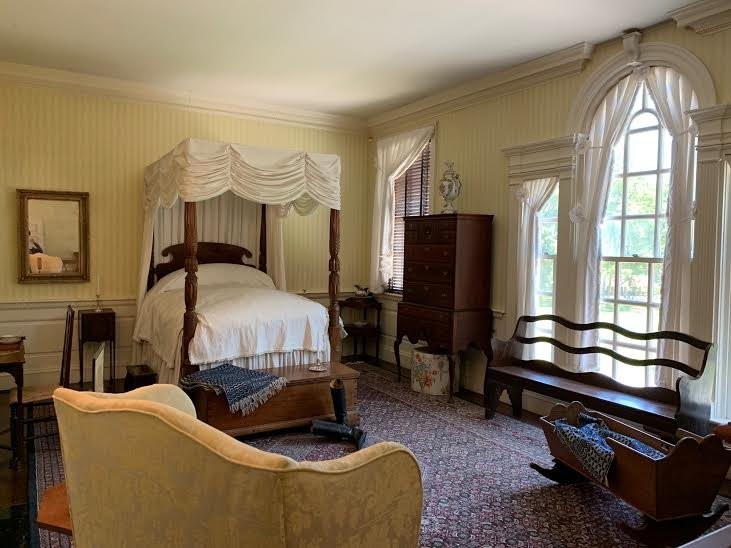
One of the parlors in the reconstructed mansion. The fortepiano that is pictured belonged to Margaret.
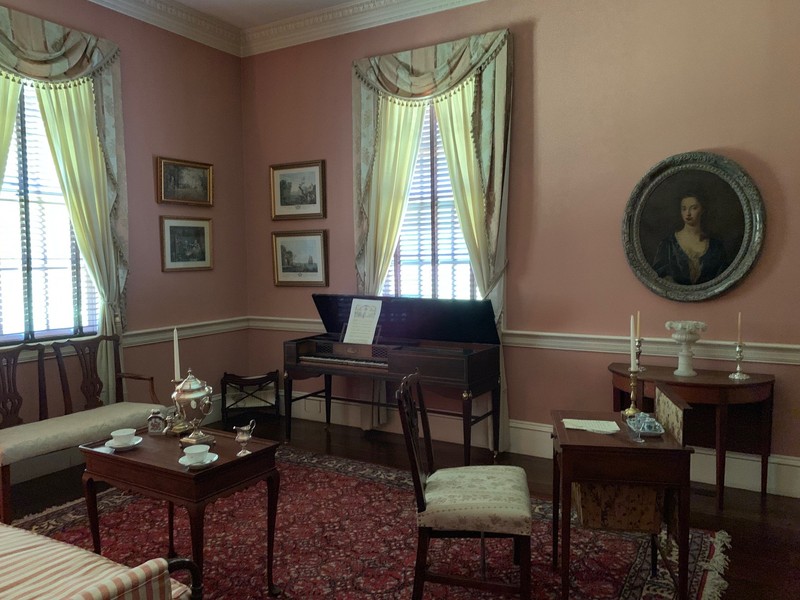
Backstory and Context
Author-Uploaded Audio
Listen to a narration of this entry's description by Eliza Kolander.
Text-to-speech Audio
Blennerhassett Mansion was completed in 1800 by Harman and Margaret Blennerhassett. Harmon Blennerhassett came from a wealthy Irish family. Even though his family was Irish, his family lived in parts of England during his childhood. He attended Trinity College in Dublin and was a lawyer for the King’s Inn Courts. He was very interested in the art, music, and the sciences, especially chemistry.
In 1794, Harman met and fell in love with Margaret Agnew, his niece who was nine years younger than himself. Their marriage was rejected by their families because it was viewed as incest and sinful. Harman also became part of the Society of United Irishman which deemed him wanted for arrest by the British government. Around this same time, his father died and left him a large sum of money that exceeded one hundred thousand dollars. These three determining factors caused the couple to move to America. After much consideration, the couple decided to come to the Ohio Valley. On January 28, 1799, they purchased land on an island in the Ohio River which came to be known as Blennerhassett Island [1]. Margaret and Harman would have three children while living on the island: two sons, Dominic and Harman, and a daughter, Margaret, who died in infancy.
The mansion was built on the upper end of the island. The construction took over 2.5 years and cost at least of half of Harman’s inheritance received from his father. It was about 8,200 square feet of luxury and splendor. The house was filled with the most expensive furnishings, paintings, and possessions. The Blennerhassetts created their own world on this island. They held large parties for locals, had several gardens where they grew a variety of fruits and vegetable, and hunted small game often. The family also operated their own hemp plantation on the island. The island and mansion were together nicknamed “Eden.”
Margaret coordinated parties and dinners at the mansion, hosting wealthy and famous visitors from all over the region. She was considered a very worldly woman. Margaret often read to her guests in French, recited Shakespeare, and provided further entertainment through music and dancing. When she moved to Montreal, she published two collections of poetry titled The Deserted Isle (1822) and The Widow of the Rock and Other Poems (1824). This has led to Margaret being considered the first published poet from what is now the state of West Virginia.
In 1805, only 5 years after the Blennerhassetts completed their grand mansion, Harman partnered with former Vice-President Aaron Burr on his quest to take the Southwest. Aaron Burr had a plan to conduct treason against the United States by annexing Louisiana and Mexico and establishing his own government. Margaret Blennerhassett was convinced that if Harman helped Burr, he would use all of his talents and become something great. Influenced by his wife, Harman invested the remainder of his money to fund this expedition, including buying boats, weapons, and much more. His island was meant to be a main base of the expedition. Thomas Jefferson was notified of this and requested that Aaron Burr and his followers be punished. The Virginia militia was sent to the Ohio River to seize the Blennerhassetts and their island. Harman escaped and his wife was not on the island when the militia came. The house was heavily damaged.
Harman was eventually arrested, tried, and released. When released, he was out of money and had a bad reputation. Margaret and Harman were forced to move from place to place while they tried to rebuild their former fortune. The attempted business ventures in Mississippi and Montreal before finally relocating back to Europe where Harman died in 1831. Margaret returned to the United States in 1842 and attempted to petition Congress for payment from her mansion’s destruction. She won her appeal but died on June 16, 1842, in a poor house in New York City, where her body was buried until her body was relocated to Blennerhassett Island in 1996 [2]. The graves of Margaret and her son, Harman Jr., are located near the reconstructed mansion.
The original Blennerhassett mansion burned to the ground in 1811. In 1973, archaeologists unearthed the house’s foundation. West Virginia spent close to one million dollars and eighteen years re-creating the mansion. The reconstructed mansion was built in the same spot as the original foundation, but the ground underneath the new mansion was elevated to lift the home off of the flood plain. In 1991, the island was opened to the public for tours, and over 50,000 people visits the mansion every year.
Sources
[1] Blennerhassett Island Historic Area, Nomination Form for the National Register of History Places, May 24, 1972 http://www.wvculture.org/shpo/nr/pdf/wood/72001294.pdf
[2] “Ohio River Baroness Returns to Her Early 18th Century Home,” News Tribune & Echo, June 29, 1996. http://www.wvculture.org/history/notewv/blenner1.html
Conner, Debra. “Margaret Agnew Blennerhassett.” E-WV: The West Virginia Encyclopedia. 25 September 2012. https://www.wvencyclopedia.org/articles/2271
Margaret Agnew Blennerhassett Wikipedia page. https://en.wikipedia.org/wiki/Margaret_Agnew_Blennerhassett
http://www.blennerhassettislandstatepark.com/mansion.html http://www.earlyamerica.com/early-america-review/volume-10/the-tragedy-of-harmon-blennerhassett/ http://www.wvculture.org/history/wvhs1312.html
